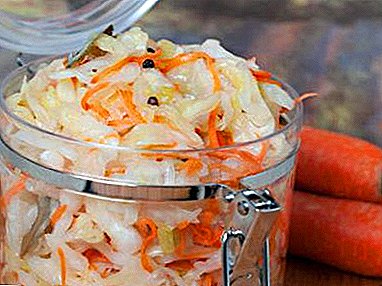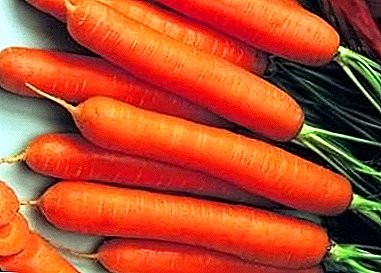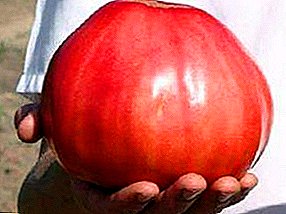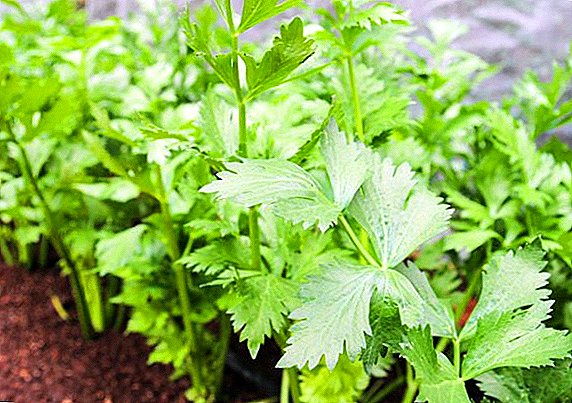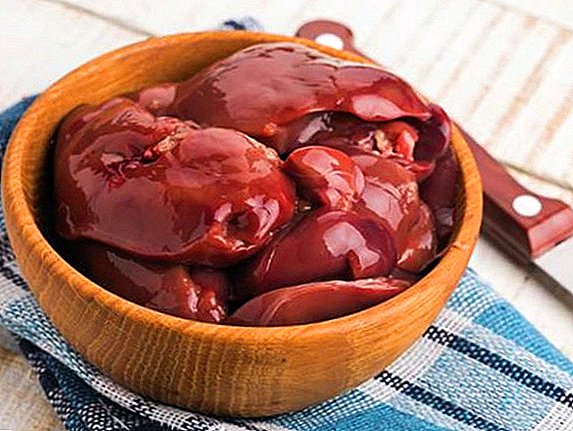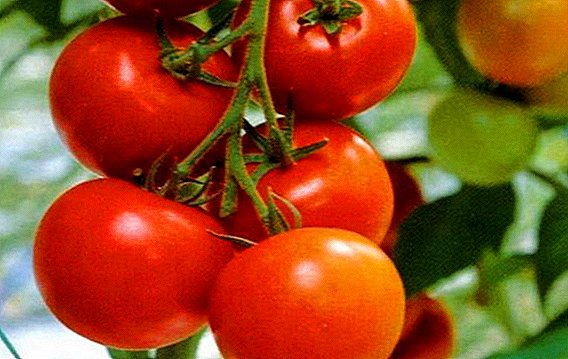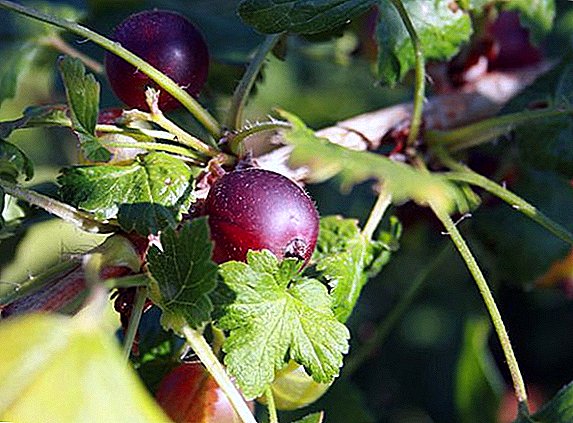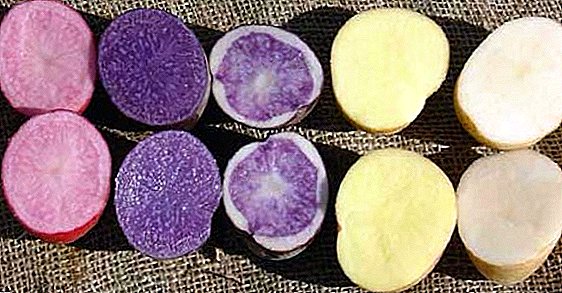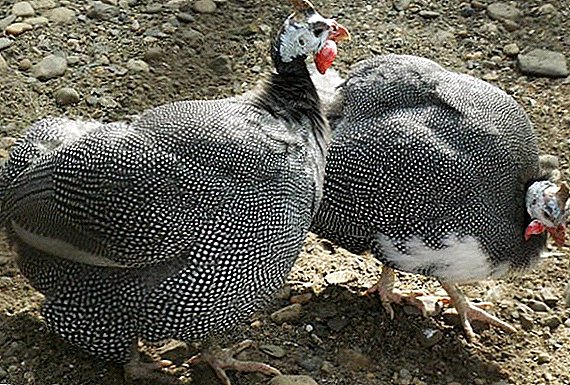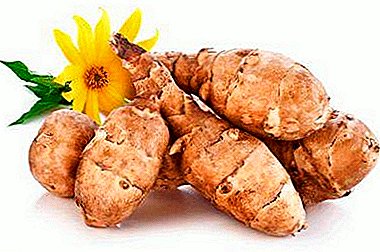
Jerusalem artichoke (sunflower, tuberiferous family of the Astrovs) - in common people better known as "earthen pear". It is a ubiquitous, unpretentious plant that has edible tubers rich in nutrients. Both tubers and the green part are used as food. Also, the plant is fed to livestock, used in medicine and pharmaceuticals.
There are many varieties of Jerusalem artichoke, differing among themselves in external signs, in yield, size of tubers, amount of green mass and other indicators.
How not to make a mistake when choosing?
Approach to the choice of varieties of Jerusalem artichoke depends on the destination. Varieties with preferential growth of the upper part of the plant are fodder varieties, and varieties with preferential development of tubers are tuber varieties of a wide range of applications.
In terms of ripening varieties of Jerusalem artichoke are:
- early;
- medium;
- late
By their properties, they can also vary greatly. Proceeding from this, it is important to choose the right type of Jerusalem artichoke for its cultivation, it must meet the needs of farmers. That is, it is important here what part of the plant will be needed, tubers or greens. Otherwise, the resulting product will not meet the demand, which was expected by the manufacturer.
 The second thing to consider when choosing a variety is the ripening period, that is, the period from planting to harvesting should be sufficient for a given climatic zone, otherwise it may not have time to give a good full harvest.
The second thing to consider when choosing a variety is the ripening period, that is, the period from planting to harvesting should be sufficient for a given climatic zone, otherwise it may not have time to give a good full harvest.
It should also take into account the fact that later varieties will somewhat extend the shelf life of tubers. A green mass should be in large quantities throughout the season, so varieties of all ripening periods will be needed in order not to be left without feed in the middle of summer.
If the Jerusalem artichoke is grown for decorative purposes or to protect other plants from the winds, then varieties with good decorative properties and a high deciduous mass are needed, which guarantees the maximum effect.
Rules of choice in different climatic zones
Not every variety is suitable for any region, as in different regions completely different climatic conditions.
- For the Urals.
It is important to choose earlier varieties, since the development cycle of this variety should have time to go completely before the onset of winter. You should also stop the choice on frost-resistant varieties that allow you to grow Jerusalem artichoke even in the northernmost latitudes, in which tubers can be left in the soil for the whole winter, not digging, and which persist until spring by 90-100%. With the help of selection, many hybrids with specified properties have been developed.
- For central Russia.
For warm regions of the middle zone of the country, it is desirable to take into account the presence of increased variety requirements for heat and drought. It is also recommended to choose late ripening varieties - these are mainly tall (up to 3–4 m), giving a lot of greenery (up to 1000 kg / ha), and tubers, although smaller ones.
- For Siberia.
In Siberia, it is not so easy to find the right sort of Jerusalem artichoke. Best of all, early ripening varieties take root. Of course, they can be grown in all areas, but they are especially relevant in this region. Early ripening varieties can also remain in the soil until spring, without any loss of properties.
Description and photos of the main species
Early
Vadim
Shrub bush. Large tubers of 60-65 g, which can be well kept in the cellar all winter, peppered with sand. Color reddish pink.

Early on
It matures quickly, for 110 - 125 days. Does not require special care, can grow in the shade, the variety is resistant to droughts, heat and frost. Branched stem, about 1.5 m, the leaves are dark, with cloves, resemble a heart. The tuberous nest is compact, the tubers are slightly yellowish, small, rounded. The yield of tubers - 250 kg / ha, green mass - 268 kg / ha.

Volzhsky-2
In this variety, the color of the stems is greenish-brown, the arrangement of the leaves is paired, there is soft pubescence on the leaves. It grows 100-110 days. Pear-like tubers of intermittent white and lilac-pink flowers, in the nest 10-30 tubers. The variety can withstand frost and drought. Good for the Central Black Earth. The yield of tubers 150 kg / ha, green mass - 200 kg / ha.

Average
Leningrad
The ripening period of this variety is 140 days, but its tubers are well wintered in the soil until spring and retain 90% of their properties, therefore the variety is zoned for the North-West. A plant with a strongly pubescent stem, leaves elongated, rarely toothed. Strongly branched bush. Tubers are white, have an elongated shape, medium size. High yield of tubers - up to 498 c / ha, as well as green mass - 420 c / ha.

Omsk white
Up to 2 m tall, moderate branching, stems dark green with a purple tint, the leaves are medium in size. Tubers are small (55-60 g), spherical, from the bush receive up to 1.5 kg. The growing season is 125-130 days. Grows in any climate. The yield of tubers - 430 c / ha.

Vylgothic
It has a thick, juicy stem with pubescence, decorated in a spreading shrub. The leaves are pointed, large, with stiff fibers. Yellow color elongated tubers. The vegetation period for green mass is 125 days. In winter, the tubers are 100% stored in the soil. Green mass yield is 346 kg / ha. Predominantly zoned for the North, North-West, Volga-Vyatka region.

Hungarian
Very common feed grade. Very high (up to 5m) plant with thick branches, does not require bright light, can grow even in the shade.

Late
Find
Late ripening variety, 170-180 days, high-yielding, good for the southern climatic zone. Stem weakly branched, with alternate light leaves. Compact tuberous nest, white-pink tubers with bright pear-shaped eyes. The yield level of tubers - 350 kg / ha.

Pasko
Tuberous variety. A powerful, intensely branching plant, the ends of the leaves are pointed, small bright flowers with a slight reddish tinge. Him large tubers weighing 75-90 g, in color white with a creamy tint, elongated. The growing season is 170-180 days. Grown everywhere. The yield of tubers reaches 308 c / ha, and the green mass - 354 c / ha.

Interest
It is highly productive, withstands heat and cold, but it feels bad when there is a shortage of moisture. Aging period is 146 days, cleaned in November, suitable only in the south. He has powerful fast-growing stems of medium branching. Eyes on smooth tubers. The yield level of tubers is 265 c / ha, green mass - 436 c / ha.

Solar
Tall (2 m) tuberous variety, moderately bushy, strongly branched. It has large, egg-shaped leaves. Large rounded basket. Tubers have the form of an ellipse, white color, average size, weight 60 g. Vegetation period is 170 days. It grows everywhere except in the subarctic climate. The yield of tubers - up to 400 kg / ha, green mass - 320 kg / ha.

Species with large tubers
In large varieties, the mass of tubers reaches 100 g or more.
- The most common large-fruited is the Pasko variety, its tubers reach 80-90 g and the yield is high, over 300 kg / ha. It can be grown everywhere.
- Sort Sunny - tubers 60 g, very high-yielding - up to 400 kg / ha. It grows everywhere, except for the Far North.
- Variety Vadim - the weight of tubers 60-65 g, have an increased keeping quality.
Of the variety of varieties, you must choose for yourself the one that best meets the needs of this valuable plant raw material used in agriculture, in the food industry and in medicine.


